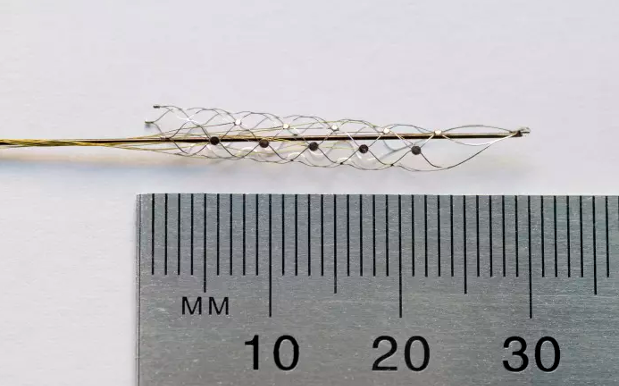
Imagine a world in which people left paralysed by injury or illness could quite literally get back on their feet thanks to a groundbreaking bionic device? And wouldn’t it just be the cherry on top if Aussie scientists with big, beautiful brains were responsible?
That right there is lookin’ like a very real possibility, after a team of Melbourne researchers designed a revolutionary bionic spine that’s being called the “holy grail for research in bionics”.
The device – a stent-based electrode, like the one pictured – will be implanted into the brains of patients with spinal cord injuries, and allow them to control a robotic limb by translating electrical activity into commands to move.

With human trials set for kick off at Royal Melbourne Hospital late next year, the ‘bionic spine’ is huge news for the more than 20,000 Aussies who live with spinal cord injuries (the typical patient is a 19-year-old male).
Professor Terence O’Brien, of Royal Melbourne, who’s overseeing the team of 39 neurologists and biomedical engineers from Royal Melbourne, Melbourne University and the Florey Institute of Neuroscience and Mental Health currently working on the project has high hopes for the future of the stent.
If the trials are successful, it could also play an A+ role in the treatment of neurological conditions such as epilepsy, Parkinson’s disease and Motor Neuron disease, as well as the fight to build a bionic eye.
Melbourne University biomedical engineer Nicholas Opie designed the metal stent – the size of a small paperclip, with elastic properties that allow it to travel through the neck’s teeny jugular vein once inserted – reckons the possibilities are endless.
“There are also a lot of blood vessels in the brain and a lot of other areas that can be accessed so that means there is a lot of potential,” he wrote in the journal Nature Biotechnology.
Other pluses:
– the stent being inserted into a vein means patients will avoid invasive brain surgery and lengthy hospital stays b/c the procedure itself only take a few hours.
– the stent slips under the immune system’s radar, so the body doesn’t try to expel it like other foreign objects.
– animal trials showed the chance of blood clotting around the stent was minimal.

Source: Nature Biotechnology / The Sydney Morning Herald.
Photo: University of Melbourne.



